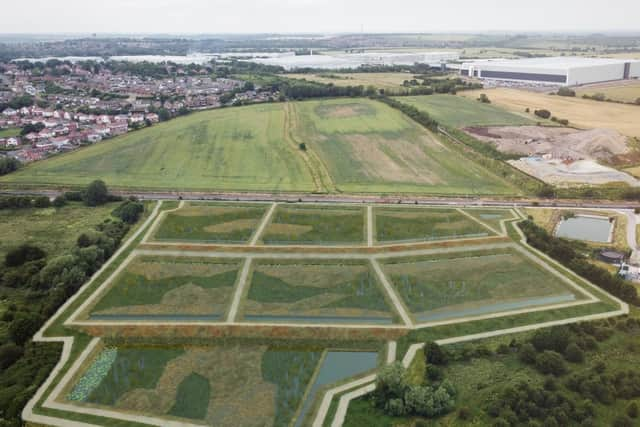Wetland planned for South Elmsall Wastewater Treatment Works
and live on Freeview channel 276
The wetland is a nature-based solution designed to treat storm flows during heavy and prolonged rainfall.
An area approximately the size of 30,000m2 (or five football pitches) featuring interconnected ponds will be constructed and planted with over 220,000 plants, which will treat the storm water as it travels through the wetland via gravity.
Advertisement
Hide AdAdvertisement
Hide AdPollutants and nutrients, such as Phosphorus, will be naturally broken down and taken up by the plants and bacteria within the wetland.


The wastewater will not include solid waste.
The new integrated constructed wetland will accommodate a flow of 440 l/s of diluted wastewater from heavy or prolonged rainfall events and will take approximately two years to construct by Eric Wright Water.
As well as providing a sustainable and energy-efficient way of treating the water, the wetland will also increase biodiversity in the area and attract a range of wildlife including bees and other pollinators, breeding birds, amphibians and reptiles.
Simon Hudson, lead project manager at Yorkshire Water said: "This is an exciting project and as we’ve seen with Yorkshire Water’s Clifton wastewater treatment works, these wetlands provide a range of benefits not only the way we treat wastewater, but also for the local environment.
Advertisement
Hide AdAdvertisement
Hide Ad“We want to naturally treat the storm water at South Elmsall, reducing the reliance of energy-heavy treatment processes, providing a sustainable way to remove pollutants and reducing storm overflows into the beck, while creating wildlife diversity and achieving a biodiversity net gain.”